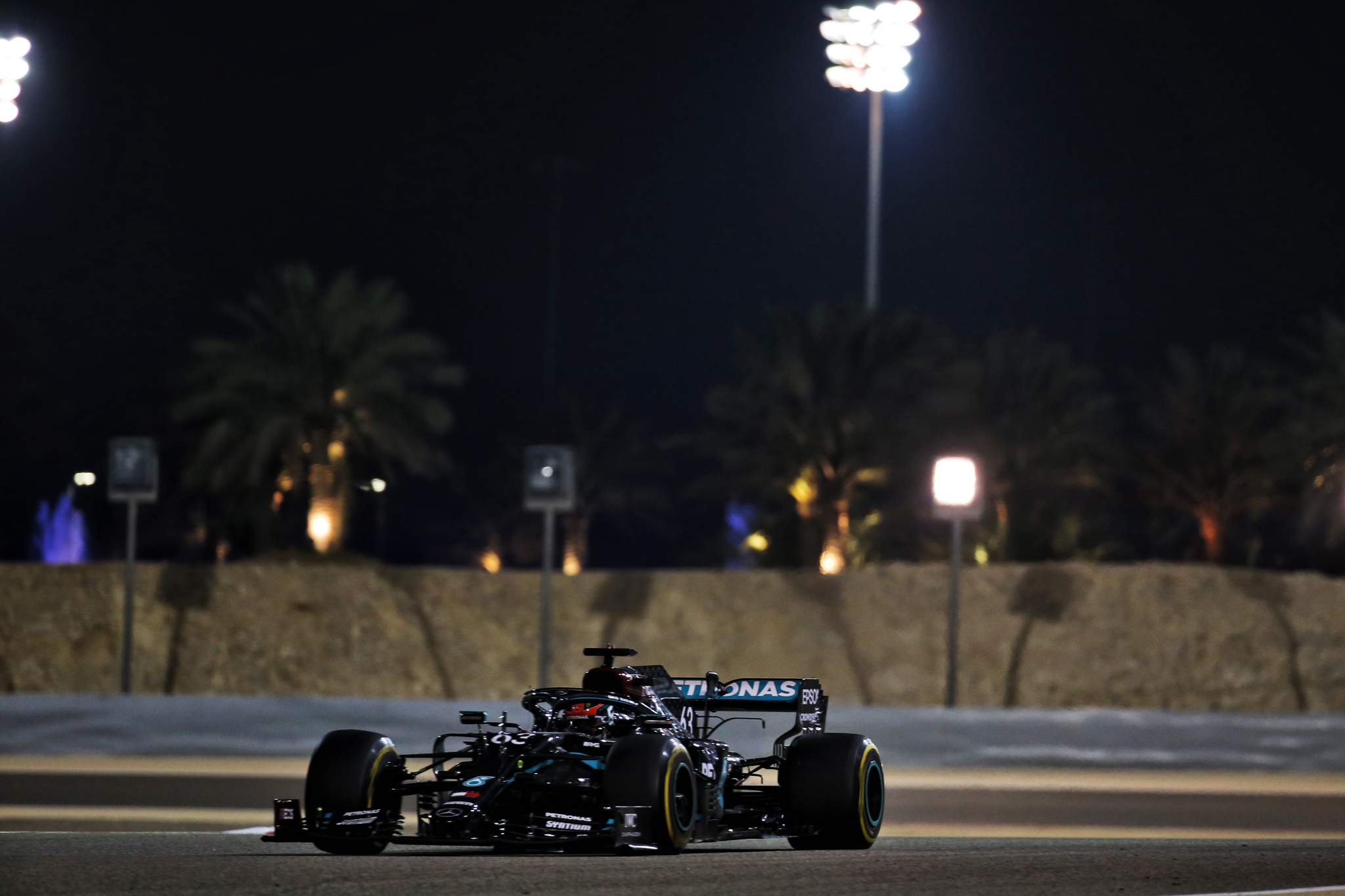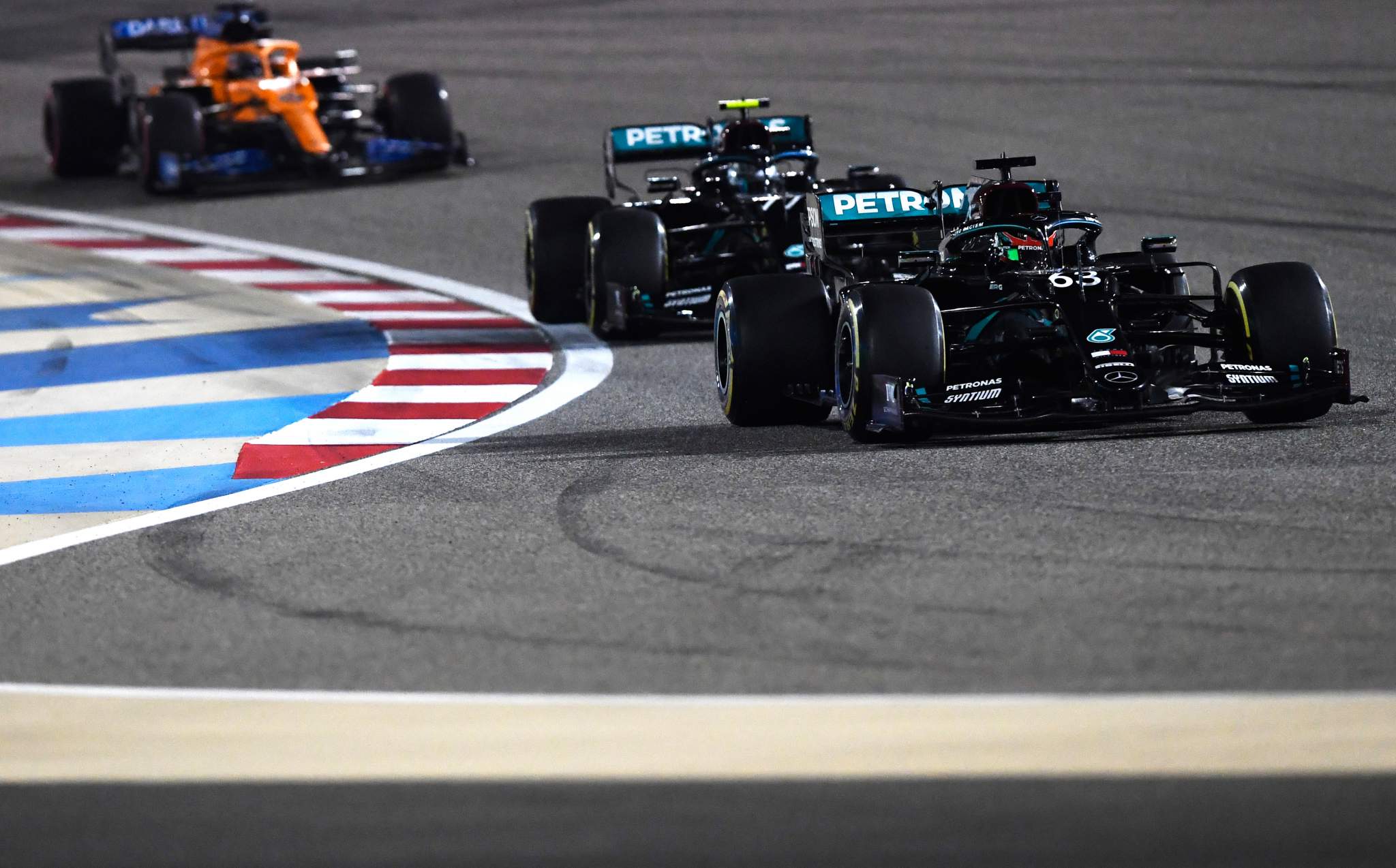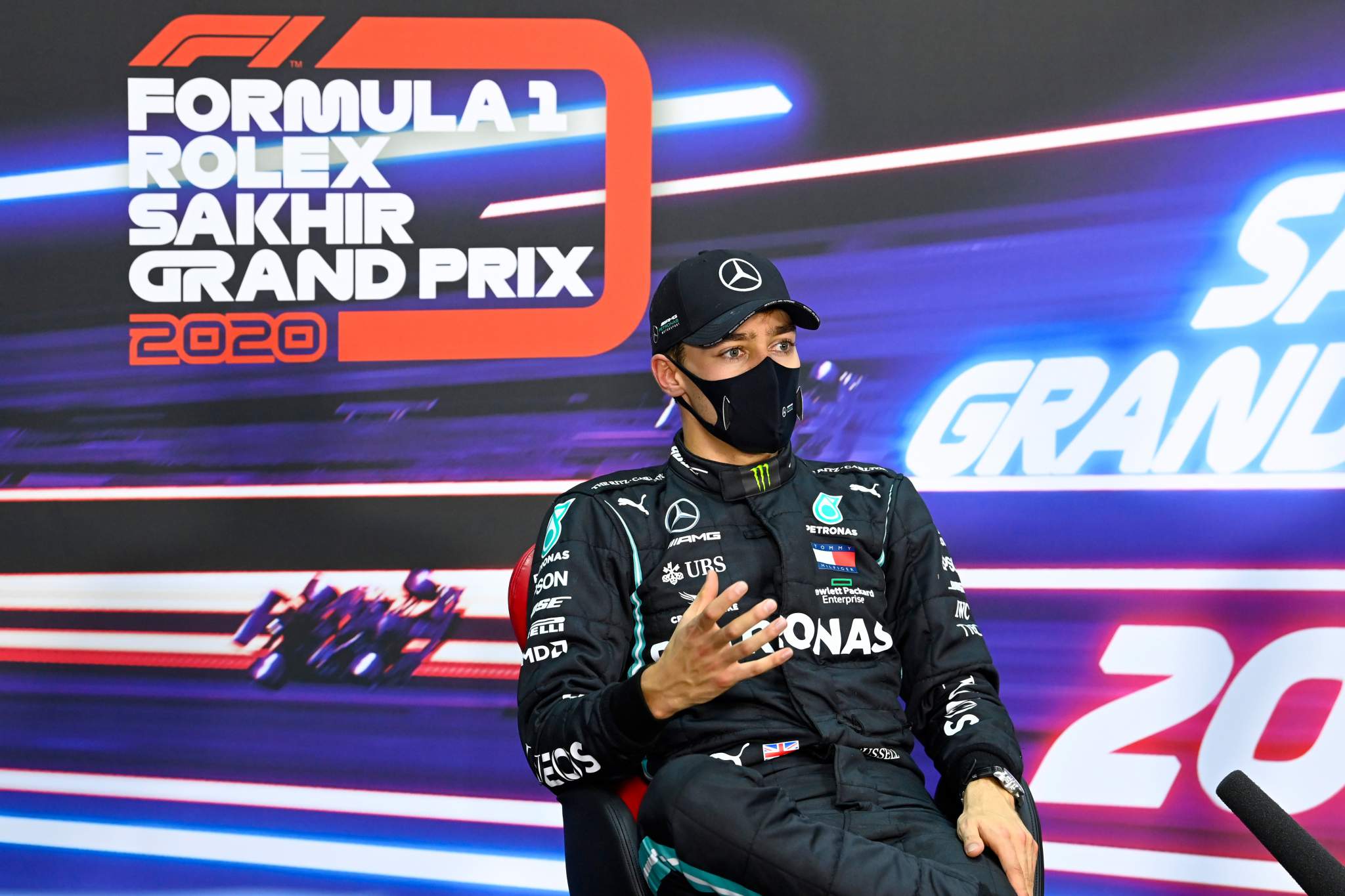Up Next

George Russell had not even driven a lap for Mercedes before one of Formula 1’s most frustrating and inevitable debates – is it the car, or the driver? – was ignited in Lewis Hamilton’s absence.
Going on to spend 59 laps of the Sakhir Grand Prix in the lead meant Russell inadvertently poured a race tank’s worth of fuel on the fire. And so began the joyless efforts of many to talk down Russell’s debut, and diminish Hamilton’s achievements in the process.
If a driver can step up from F1’s slowest team having never scored a point before and nearly stick it on pole and win, how much better than the rest of the grid is the 2020 Mercedes? How easy has Hamilton really had it this year? Doesn’t this prove anyone would be champion in that car – so is Hamilton anything special, and was Russell’s performance that big of a deal?
Looking past the depressing cocktail of cynicism and pessimism that lubricates such a miserable train of thought, it is understandable that the circumstances of the Sakhir GP weekend would raise a few eyebrows. Especially to a viewer detached from the nuanced aspects of, say, Hamilton’s domination of F1 in recent years or the qualities that make Russell so highly-rated.
The first thing to say in response is that a driver’s performance says more about them than anything else. What was witnessed in Bahrain should be taken as a display of Russell’s skills more than showing the supposed ‘easy’ life Hamilton has had.
We should look to the United States for one of the most sensible and well-reasoned judgements of Russell’s weekend, from sometime IndyCar driver J.R. Hildebrand, who highlighted four areas that a car “doesn’t account for”: extracting maximum performance, execution in pressure-filled moments, awareness and ability to read a race, and sense of composure.
Hildebrand says these areas can be used to benchmark a driver irrespective of the quality of their machinery, and he’s right.
There will always be a split between car and driver in motor racing, even single-make categories (unless they have a centrally-run team and fixed set-up…). In F1, especially modern F1, that split is exaggerated towards the car more than other championships.
However, the driver’s input is a long way from zero, and substantial enough to be a critical factor in determining the outcome. Even in a car as good as the Mercedes.
So, the quality of the Mercedes W11 and the Mercedes team would give any driver a comfortable window in which to perform at a high level. It’s down to the driver to determine the quality of the result.
This is where Russell’s performance can be judged. And if we scrutinise the driver-sensitive areas above, we see how Russell didn’t just turn up, get in and drive to a good result. He excelled.

In qualifying, arguably the ‘easiest’ of these areas, Russell was just 0.026s slower than Bottas. This was the part of the weekend Mercedes and Russell had most faith in. The driver puts it all on the line and more nuanced shortcomings or problems can be neutralised over one lap. In the fastest car on the grid and alongside an experienced and accomplished one-lap specialist, the front row was possible.
To achieve that and be so close to Bottas, a driver who beats Hamilton in qualifying roughly one time in three, puts Russell’s performance at the upper limit in this area.

Bottas admitted Russell drove an error-free race. But it was not just a case of Russell avoiding mistakes. He outperformed those around him in the pressure moments.
Russell beat Bottas into Turn 1, he did enough at the safety car restart to stay ahead, and the inlap/outlap around his first pitstop was strong. There were a handful of vital moments in tense situations that Russell needed to ace and he did so without even blinking.
In both stints, before the race went away from Mercedes, he also seemed to have Bottas in check behind. Bottas was the one struggling with the track conditions in the opening stint while Russell cracked on without much concern in the lead, extending his stint as Mercedes requested.
Once on the hard tyre, even with Bottas trying to mount an attack, Russell was in race management mode. Considering his lack of long-run experience in the car, and a pace deficit to Bottas in this regard on Friday, this was a rapid and significant adaptation.
And when Russell’s control of the race was stripped from him through Mercedes’ botched pitstop, at no fault of his own, he was doing a fantastic job at recovering. He showed excellent composure, speed and decisiveness, typified by his much-heralded pass on Bottas, before a puncture stymied his charge once again. Even then he rose back into the points.
There were several opportunities for Russell to lose his head. He had a little pep talk over the radio, but that was pre-emptive from his race engineer rather than a response to a loss of composure.
“There is now no doubt that he’s F1 world champion material,” was F1 sporting boss Ross Brawn’s glowing review.
What a move this was by @GeorgeRussell63!
He needed speed, poise and bravery to make it stick, and he did! 👌#SakhirGP 🇧🇭 #F1 @MercedesAMGF1 pic.twitter.com/HL9cvkNbOf
— Formula 1 (@F1) December 6, 2020
“He didn’t make any mistakes in a challenging situation and all the problems were the team’s, not his. And he drove impeccably until he had the win taken away.
“He will be very frustrated not to have won but I don’t think he should be. He’s registered on the scale now. Any doubts anyone had, will be gone. Clearly, he’s exceptional.”
All of this accomplished in a car that wasn’t tailored to his needs and preferences, physically didn’t fit him and hurt to drive.

Russell executed a superb weekend, not just a superb race. He pointed out that he feels he has done this before, with Williams. It’s just for less heralded positions. That does not mean any driver could simply take the job they do for their current team, repeat it in a Mercedes, and emulate what Russell did. It means he was operating to a higher level at Williams than people understood.
“I always thought he was a good grand prix driver,” said Brawn. “But you never know if he has that last little bit of speed that marks you out as a brilliant driver.
“George demonstrated that he has got that extra little bit – and a star is born.”
There is an inevitable second-order conclusion from this. However impressive Russell was, Bottas was not. He was expected to lead the team and did not.
But to return to the message at the start, a driver’s performance says more about them than it does others. Bottas gave a nervous performance that points at the sort of fundamental weakness that makes him a fast but flawed driver. He cannot do what Hamilton does. But maybe Russell can.
This should excite people. One swallow does not make a summer and a one-off performance doesn’t mean Russell is at the same level as Hamilton. But outperforming Bottas should be viewed as a marker of the heights Russell could climb to, rather than an excuse to pull back Hamilton.
After all, Russell’s superb Mercedes debut underlined that, yes, the car is especially important to achieving success in F1. It was an example of how a very good driver can do more with a faster car than a slower one. It underlined the Mercedes is very quick. But we knew this already. There is no great analysis in saying ‘this showed that F1’s a car-dependent championship’.
It is a fact that a great car and a great team can provide a great opportunity. What Russell did is highlight the sort of great performance required to make the most out of it. What Hamilton has achieved highlights the excellence required to do that week in, week out.
Whether it’s a one-off or a world title, the driver in the Mercedes has the best chance of success. But that doesn’t mean any old F1 driver could achieve it.







